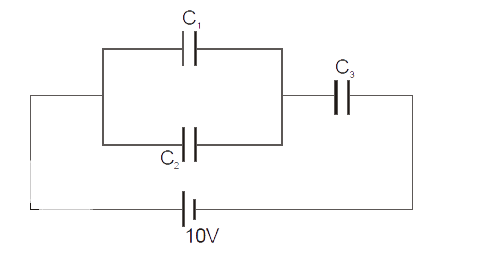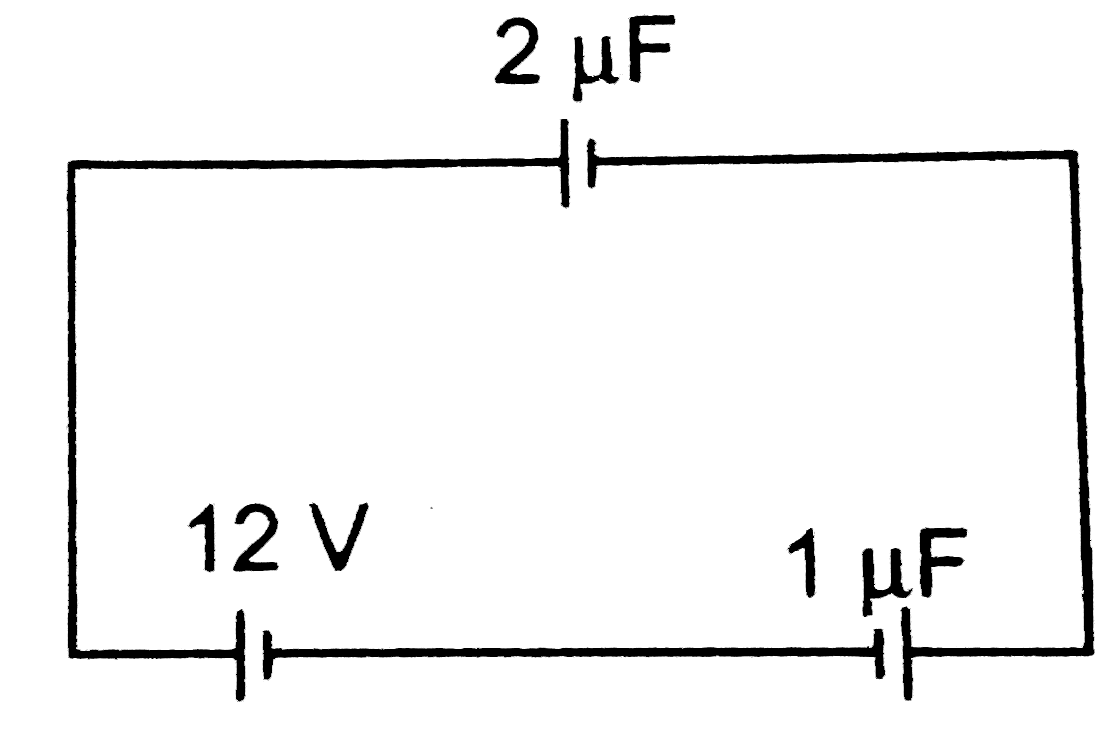
In the network shown in figure. C1=2.0μF,C2=6.0andC3=2.5μF. Determine (i) total capacitance, charge and energy of the system (ii) charges on separated capacitors (iii) potential differences across the separate capacitors.
Step by step video & image solution for In the network shown in figure. C_(1)=2.0muF,C_(2)=6.0 and C_(3)=2.5muF. Determine (i) total capacitance, charge and energy of the system (ii) charges on separated capacitors (iii) potential differences across the separate capacitors. by Physics experts to help you in doubts & scoring excellent marks in Class 12 exams.
Updated on:21/07/2023Topper's Solved these Questions
- CAPACITORSBook:SL ARORAChapter:CAPACITORSExercise:Problem From Competitive Examinations
Explore 17 Videos
- ATOMS, NUCLEI AND MOLECULESBook:SL ARORAChapter:ATOMS, NUCLEI AND MOLECULESExercise:Problems For Self Practice
Explore 87 Videos
- CHEMICAL EFFECT OF CURRENTBook:SL ARORAChapter:CHEMICAL EFFECT OF CURRENTExercise:TYPE-B
Explore 5 Videos
Similar Questions
Knowledge Check
In the circuit shown in the figure, the potential difference across the 4.5μF capacitor is
 A83voltsB4 voltsC6 voltsD8 volts
A83voltsB4 voltsC6 voltsD8 voltsIn the given network capacitance, C1=10μF,C2=5μF and C3=4μF. What is the resultant capacitance between A and B?
 A2.2μFB3.2μFC1.2μFD4.7μF
A2.2μFB3.2μFC1.2μFD4.7μFA parallel plate capacitor of capacitance 1μF has a charge of +2μC on one of the plates and a charge of +4μC on the other. The potential difference developed across the capacitor is
A5VB2VC3VD1V

In the network shown in figure. C1=C2=C3=C4=10μF. Find th equivalent capacitance between the points A and B, what will be the charge on each capacitor?
View SolutionIn the circuit shown the capacitors are C1=15μF,C2=10μFandC3=25μF. Find

the equivalent capacitance of the circuit.
View Solution
(a ) Find the equivalent capacitance of the combination shown in the figure ( a) when C1=2.0μF,C2=4.0μF and C3=3.0μF
(b ) The input terminals A and B in figure (a) are connected to a battery of 12 V. Find the potential and the charge of each capacitor .
View SolutionIn the circuit shown in figure C1=5μF,C2=29μC,C3=6μF,C4=3μF and C4=7μF. If in steady state potential difference between points A and B is 11 volt, calculate potential difference across C3.

View SolutionIn the circuit shown the capacitors are C1=15μF,C2=10μFandC3=25μF. Find

the potential difference across each capacitor.
View Solution



